Optics
The group is currently working on a line of research based on the analysis of the preocular tear film in eye photographies and videos. This line of research is directed to the diagnosis of various tear dysfunction problems, like the "dry eye syndrome".
Collaborations
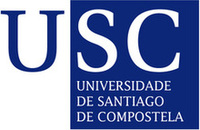
Department of Applied Physics.
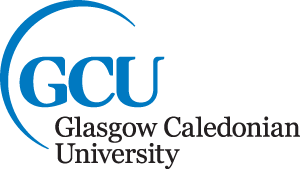

Universidade do Minho
Working fields
Tear film lipid layer classification using Tearscope images
We have developed a methodology to classify the tear film lipid layer patterns using the Tearscope plus as the instrument to acquire tear film images. The proposed methodology works on several stages to detect the region of interest of an input image, extract its descriptor based on color and texture information, and classify it into one of the five categories: open meshwork, close meshwork, wave, amorphous and color fringe. The method has been tested on several images from each tear type with maximum accuracy over 95%.
Additionally, we have developed another methodology to create tear film maps, which illustrates the spatial heterogeneity of the lipid layer and allows to detect multiple patterns per patient.
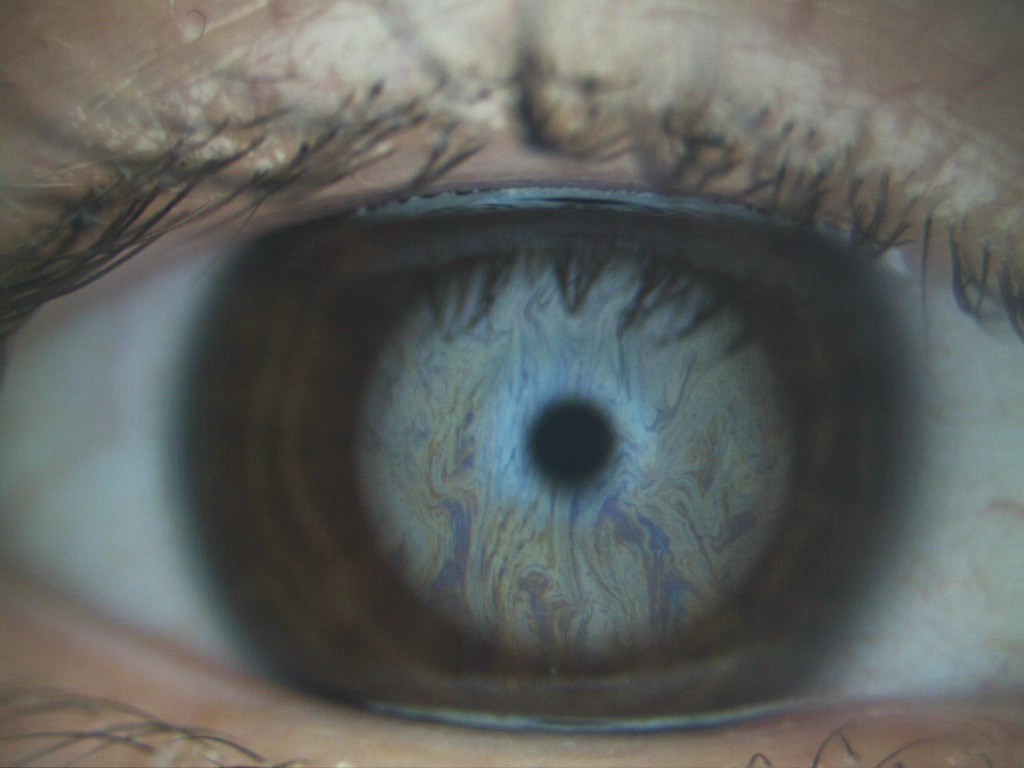
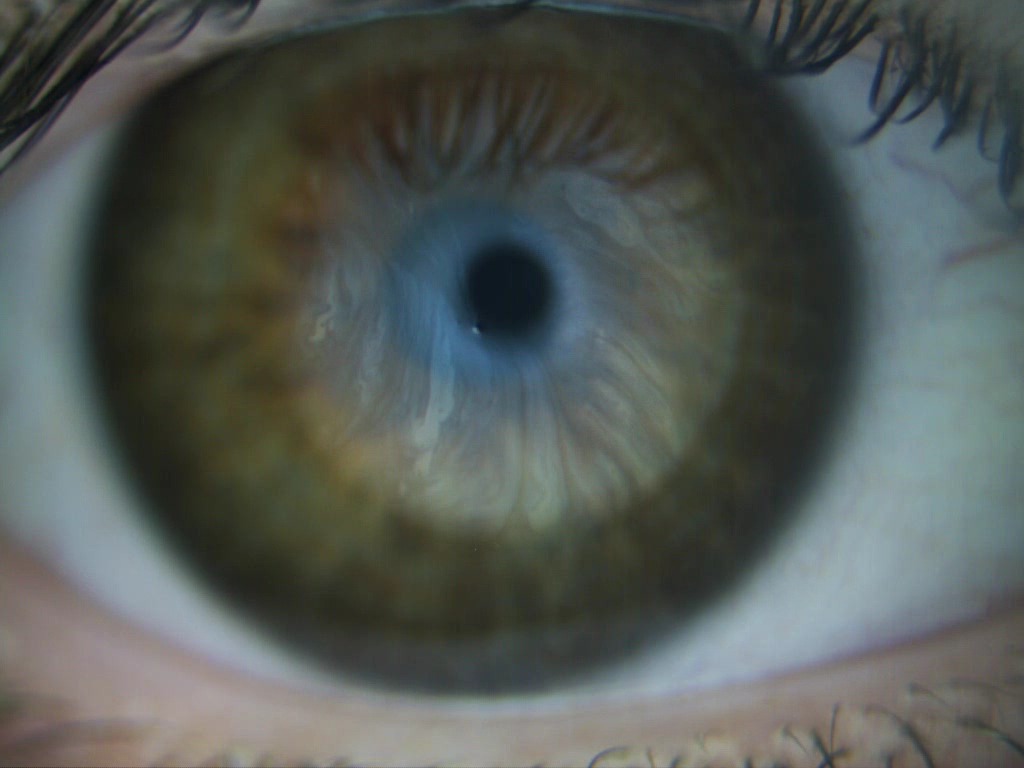
Tear film lipid layer classification using Doane images
We have developed a methodology to classify the tear film lipid layer using the Doane interferometer as the instrument to acquire tear film images. The proposed methodology works on several stages to detect the region of interest of an input image, extract its descriptor based on color and texture information, and classify it into one of the five categories: strong fringes, coalescing strong fringes, fine fringes, coalescing fine fringes and debris. The method has been tested on several images from each tear type with maximum accuracy over 93%.
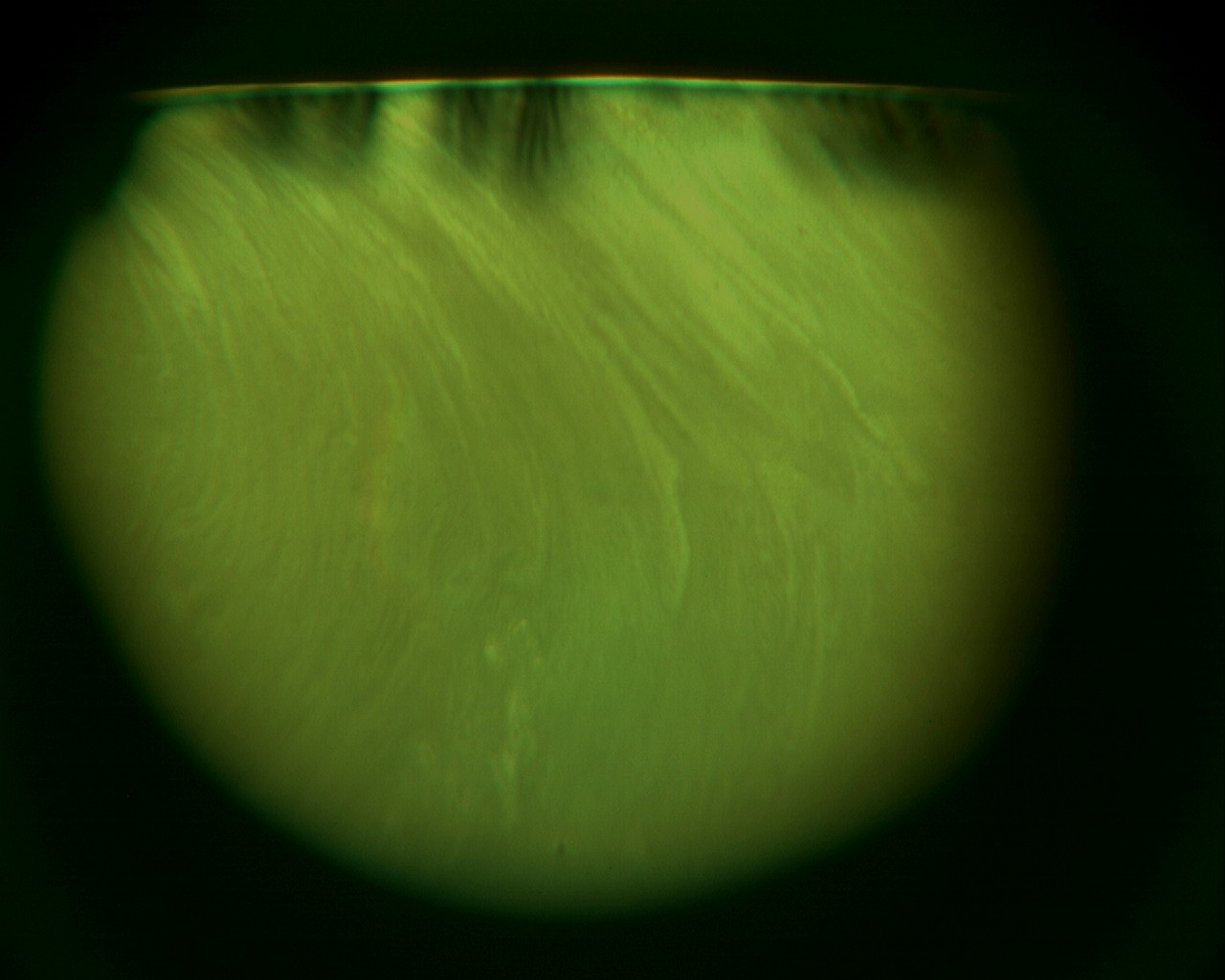
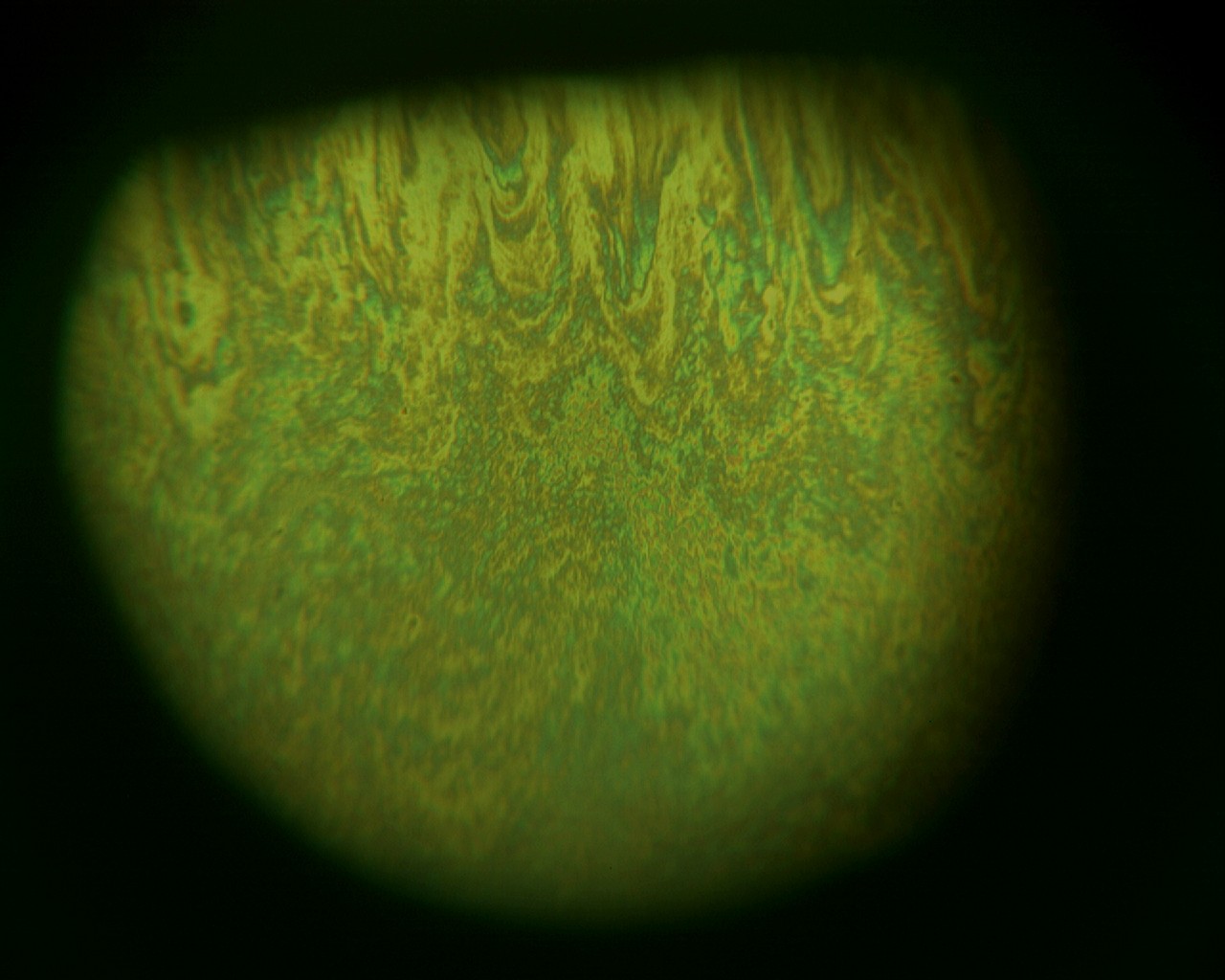
Tear film break-up time test
The Break-Up Time (BUT) is a clinical test which consists of measuring the time that the tear film remains stable without blinking. We have developed an automatic methodology to perform this test. The proposed methodology locates the different measurement areas from a tear film video, extracts the region of interest and performs the BUT test in each measurement area. The method has been tested on 18 tear film videos annotated by 4 different optometrists achieving results in the same range as between the experts themselves.
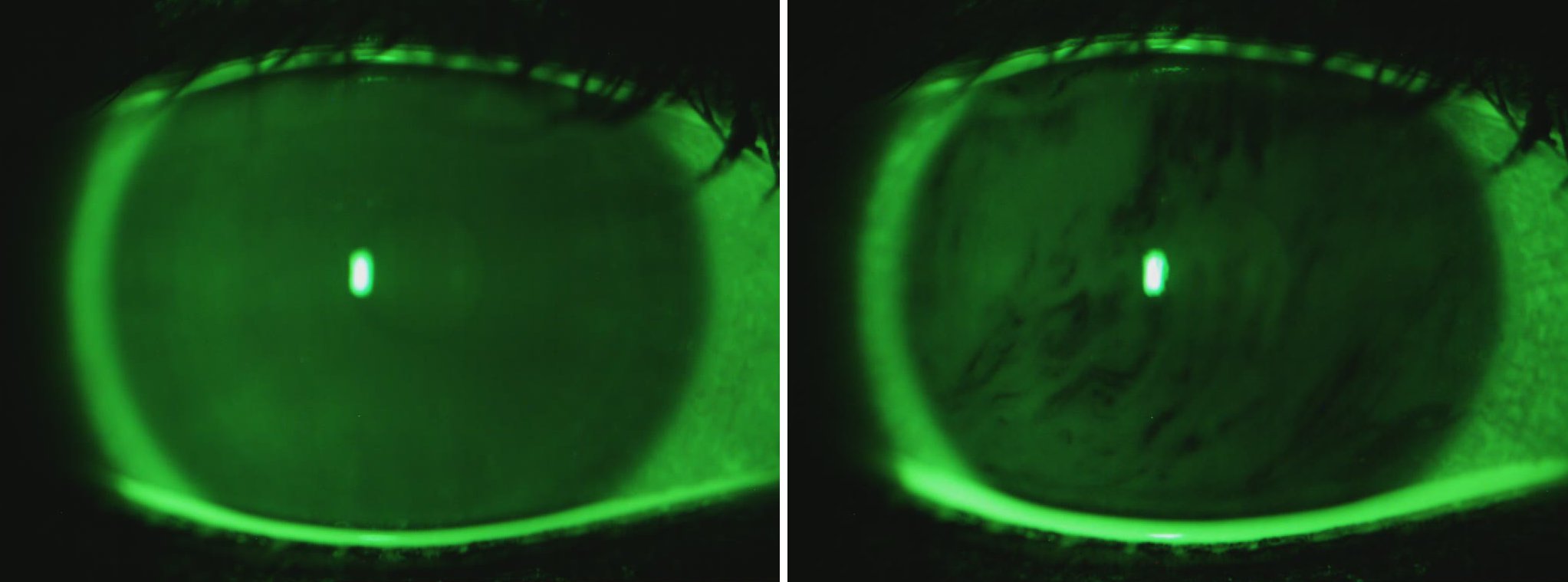
Public databases
Tearscope images
These datasets contain images of the preocular tear film over different illumination conditions. All the images have a spatial resolution of 1024x768 pixels and have been acquired with the Tearscope Plus (Keeler, Windsor, UK). All these datasets have been acquired and annotated by optometrists from the Optometry Service of the University of Santiago de Compostela (Spain) and, in the last case, also by optometrists from the Physics Center of the University of Minho (Portugal). The filenames of the images indicate the predominant interference pattern: CO is color fringe, AM is amorphous, FL is wave, MA is open meshwork, and MC is closed meshwork.
If you are interested in using the VOPTICAL datasets, please send an email to: bremeseiro@uniovi.es and you will receive an authentication password to access the datasets. This is for statistical purposes only, no private data or fee is required. If you use this image set for your work, please include a reference to the database in it.
-
The VOPTICAL_I1 Database distribution [Cite] contains 105 images of the preocular tear film taken over optimum illumination conditions, and acquired from health subjects with dark eyes and aged from 19 to 33 years. The dataset includes 29 open meshwork, 29 closed meshwork, 25 wave and 22 color fringe images.
The VOPTICAL_I1 Database processed contains 588 features extracted from the 105 images using the Lab color space and the co-occurrence features technique for color and texture analysis, respectively. More information can be found in "A Methodology for improving tear film lipid layer classification" [DL]. Note that the correspondence between labels of classes and interference patterns is: 1 for color fringe, 2 for wave, 3 for open meshwork, and 4 for closed meshwork. - The VOPTICAL_I1-v2 Database distribution [Cite] is the updated version of the VOPTICAL_I1 dataset. It contains 128 images of the preocular tear film taken over optimum illumination conditions, and acquired from healthy subjects with dark eyes and aged from 19 to 33 years. The dataset includes 29 open meshwork, 29 closed meshwork, 25 wave, 23 amorphous and 22 color fringe images.
- The VOPTICAL_L Database distribution [Cite] contains 108 images of the preocular tear film taken over optimum illumination conditions, and acquired from healthy subjects with light eyes and aged from 19 to 33 years. The dataset includes 30 open meshwork, 28 closed meshwork, 27 wave and 23 color fringe images.
- The VOPTICAL_Is Database distribution [Cite] contains 406 images of the preocular tear film taken over four different illuminations, and acquired from healthy subjects with dark eyes and aged from 19 to 33 years. The dataset includes 159 open meshwork, 117 closed meshwork, 90 wave and 40 color fringe images.
- The VOPTICAL_R Database distribution [Cite] contains 50 images of the preocular tear film taken over optimum illumination conditions, and acquired from healthy subjects aged from 19 to 33 years. The dataset contains images with multiple patterns, a sign of meibomian gland abnormality, including: open meshwork, closed meshwork, wave, amorphous, and color fringe.
Doane images
The VOPTICAL_GCU Database distribution contains 106 examples of real interferometric images. It includes 11 strong fringes, 25 coalescing strong fringes, 30 fine fringes, 26 coalescing fine fringes, and 14 debris images. All the images have a spatial resolution of 1280x1024 pixels, and have been acquired with the Doane interferometer and a digital PC-attached CMEX-1301 camera. This dataset has been acquired and annotated by optometrists from the Department of Life Sciences, Glasgow Caledonian University (UK). The filenames of the images indicate the predominant pattern: CO is fine fringes, FL is coalescing fine fringes, MA is strong fringes, MC is coalescing strong fringes, and AM is debris.
If you are interested in using the VOPTICAL_GCU dataset, please send an email to: bremeseiro@uniovi.es and you will receive an authentication password to access the dataset. This is for statistical purposes only, no private data or fee is required. If you use this image set for your work, please include a reference to VOPTICAL_GCU in it. [Cite]
Main publications
-
,
,
,
,
,
,
,
"iDEAS: a web-based system for dry eye assessment",
Computer Methods and Programs in Biomedicine,
130,
186-197,
2016.
[Abstract] [PDF] [+Info.]
-
,
,
,
"CASDES: A Computer-Aided System to Support Dry Eye Diagnosis Based on Tear Film Maps",
IEEE Journal of Biomedical and Health Informatics,
20 (3),
936-943,
2016.
[Abstract] [PDF] [+Info.]
-
,
,
,
,
,
,
,
,
"A Methodology for Improving Tear Film Lipid Layer Classification",
IEEE Journal of Biomedical and Health Informatics,
18 (4),
1485-1493,
2014.
[Abstract] [PDF] [+Info.]
-
,
,
,
,
,
,
"Automatic grading system for human tear films",
Pattern Analysis and Applications,
18 (3),
677-694,
2015.
[Abstract] [PDF] [+Info.]
-
,
,
,
,
,
"Break-up analysis of the tear film based on time, location, size and shape of the rupture area",
7950,
695-702,
International Conference on Image Analysis and Recognition (ICIAR 13),
Povoa de Varzim, Portugal,
2013.
[Abstract] [PDF] [+Info.]
-
,
,
,
,
,
,
,
"Adaptive parameter computation for the automatic measure of the Tear Break-Up Time",
243,
1370-1379,
16th International Conference on Knowledge-Based and Intelligent Information & Engineering Systems (KES'12),
San Sebastián,
Setember 2012.
[Abstract] [PDF] [+Info.]